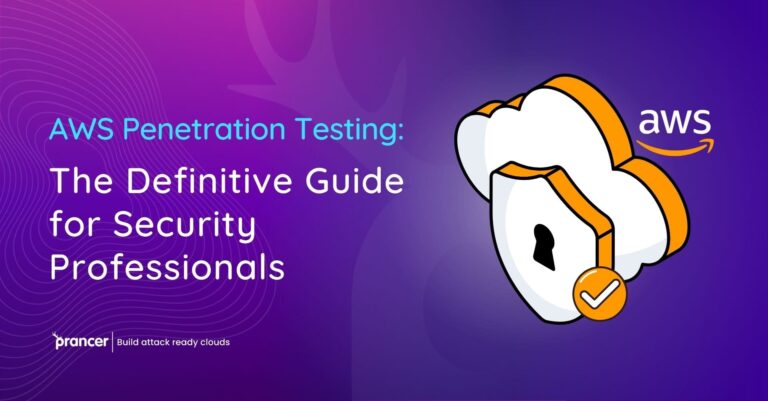

With the constantly changing nature of digital terrain, web application security has no small importance. With the rise in the sophistication of threats, organizations are being forced to adapt by getting better at devising strategies and tools to detect compromised applications. deployed foolproof protective mechanisms At the center of these monitoring systems are penetration testing tools, intended to allow companies to evaluate their own security preparedness more actively and ward off at least a number of innate weak points. The blog examines penetration testing tools in great detail and presents Prancer as a complete digital solution for automated pentesting.
Automated Penetration Testing is an important player in the ever-changing sphere of application security for web. As cyber threats become more sophisticated, organizations need advanced approaches like Automated Penetration Testing which acts preemptively in discovering and responding to weaknesses. Prancer is an Automated Penetration Testing tool, while this blog discusses penetration testing tools and their complexities. Know how Automated Penetration Testing helps organizations harden their programs against advanced cyber attacks.
Deciphering Penetration Testing Tools: Sometimes vernacularly referred to as ethical hacking, penetration testing is the systematic development of simulated real-world attacks on web applications in order to seek out flaws. Special types of tools and methods are used to locate any flaws in software that could be exploited as points of entry by malicious codes. The tools use various testing technologies including vulnerability scanning, network mapping, and application penetration tests to give a comprehensive assessment of web app security.
Showcasing Prancer: Automating Penetration Testing Prancer is a best-in-class automated penetration testing tool that helps companies strengthen their web application security. Equipped with an array of functions and tools, Prancer simplifies the process of discovering vulnerabilities; it also automates testing procedures and creates clear reports. Its strong engine combines security testing practices and ensures accurate, reliable results.
Holistic Testing: Prancer includes a variety of security testing methodologies, from compliance testing to vulnerability inspection and code review. This enables organizations to identify potential threats and protect themselves against violating industry standards.
Adaptable Scenarios: Prancer also offers users the flexibility to tailor penetration tests to their actual needs. Supporting both Python and JavaScript, it helps you to write attack scripts that fit your needs while also integrating the necessary parameters and secrets.
Support for JWT Authentication: It allows users to run JWT-authenticated scans, which are similar to the situations encountered in real companies that cannot simply open web applications without token authentication. This functionality helps to increase the precision and power of penetration testing.
Interactive Dashboard and Reporting: Prancer offers a user-friendly dashboard that shows illuminating graphs and statistics about test results. It also has a complete reporting capability that produces detailed reports with useful recommendations for organizations to act upon, enabling them to manage their exposure more effectively.
Automated Scheduling: Prancer’s scheduler function enables the full automation of penetration testing. Compliance or crawler jobs can be scheduled to run at preset intervals so that users need not interact with the device on a regular basis and web application security will still remain under observation.
Capitalizing on Prancer for Enhanced Web Application Security: Organizations are working hard to ensure that their web applications provide the ultimate safeguard, and Prancer stands out as a reliable, convenient solution for automated penetration testing. Through the use of their holistic abilities, diverse application cases, and progressive testing techniques a number can help businesses to actively detect weaknesses, manage risk factors, and protect high-value assets.
The specter of cyber threats is ubiquitous in the digital realm, and naturally web application security has now become a top priority for organizations. With cyber enemies honing their axes, penetration testing tools have become part of the required arms arsenal to ensure security from attack. The tools are a vanguard, probing the defenses by simulating actual scene-of-crime attacks to find out where the armor breaks. Of these, Prancer is a true leader in the battle for strong web application security. When using Prancer, it’s as if the enormous haystack of digital data has already been narrowed down. Exposing their flaws is just the beginning, but you have to get a handle on them in relation to all of life’s cyber threats, and then prioritize and plan an appropriate course of action. The flexibility of Prancer’s testing environment, along with its clear reporting methods, serve as a beacon in the stormy seas of web security. The automation it brings to the table is like having a sentry keeping watch, which would be just what many organizations need in such an environment where there are no breaks taken by their attackers. Organizations that embrace the power of Prancer are not simply responding to cyber threats. They’re also being proactive in keeping a tight lid on their digital gates and giving these black knights little breathing room for air attacks or parrying blows.
Conclusion:
Penetration testing tools are now definitely needed if you want to ensure web application security in an online world filled with threats. Prancer’s mature functionalities and convenient format provide a comprehensive automated approach to penetration testing. Through that process, by incorporating Prancer into their security models, organizations can secure web applications and sensitive data. In the web application security corner, he always remembers that you should rely on reliable penetration testing tools such as Prancer. Be informed, be prepared, and foremost of all protected.
